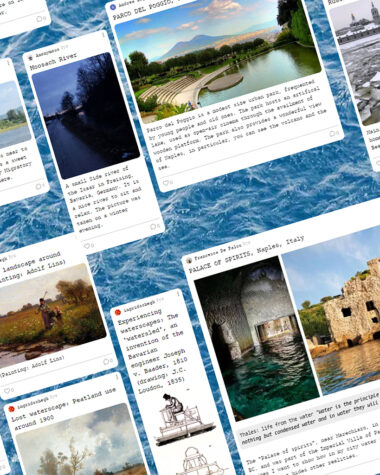
CO-LAND stands for Inclusive Coastal Landscapes.

Coastal landscapes
Coastal landscapes across Europe are often characterized by overlaying and competing land uses. They are focus areas for settlements and infrastructure, especially road and train networks, and many industries and commercial zones that benefit from close access to harbours. Conversely, the tourism industry is also a major driving force with its own development dynamics and typical spatial patterns. All those economic potentials have attracted people to settle on the coast an ongoing process, leading to unsustainable development such as urban sprawl and irreversible consumption of soil and other natural resources. However, water-based recreation has various positive effects on human physical and mental health and wellbeing, which is why on the one hand people love to visit the seaside on vacation while on the other hand poor or restricted access to waterscapes raises issues of social equity and spatial justice. The urban-land interface is also an important and often vulnerable habitat zone for flora and fauna which brings additional demands on such areas and puts them at risk from damage and degradation of the territory. This vulnerability is increased by the effects of climate change. Being a magnet for human settlements since early ages, coastal landscapes are also often extremely rich in cultural heritage and form part of our collective memory and identity.
Planning for sustainability
Their sustainable and integrated planning, design and management are crucial for the mental, social, physical, and economic well-being of many European citizens. The overall goal of this project was to make higher education more relevant for society. We aimed to equip students not only with relevant knowledge, methods and tools, but also encourage them to build visionary and democratic mindsets. Planning and design decisions must derive their legitimacy from a basic understanding of local needs, values and goals. Emerging professionals must be trained to develop transformative planning competences. Next to envisioning alternative futures, they also need to be able to empower community members to take an active role in shaping those futures.
This strategic partnership developed an international blended learning environment in which students from various planning disciplines participated and improved their capacities to addressing specific spatial, social and environmental challenges of coastal landscapes in Europe using integrative, creative and inclusive methods. The consortium developed and tested an open online course during which learners collaborated in interdisciplinary, multicultural and virtual teams on local case studies. Along with this, relevant theories, methods and tools were introduced in the form of online lectures and open educational resources. In this context, teaching staff developed adequate skills and methods to conducting student-centered and interactive lectures and seminars in a virtual classroom. The online activity was followed by four subsequent intensive study programmes (ISP) organized by the project team in strong partnership with coastal communities in Romania, Estonia, Italy and Belgium.
CO-LAND results and publications
The CO-LAND methods and case studies were documented and synthetised on paper and in digital format and further disseminated to the European academic and professional community and participating coastal municipalities through the project webpages and other communication channels. Three booklets and a video-presentation were produced by the end of the project, describing the four ISPs, their objectives, programmes and outputs. The core target groups were university staff and students in the fields of urban, landscape and regional planning, architecture and landscape architecture. To them, the main outputs of the project were addressed:
- A comprehensive set of ICT-based learning materials on the topic of integrated development of coastal landscapes (theories, methods, tools and case studies) was developed using a mixed-media approach by combining digital repositories, synchronous online-seminar, video lectures and social media; all these resources are made available on the Wiki project page;
- A Guidance report for university staff on “How to teach integrated planning and design for coastal landscapes” including reflections, methods and findings based on the experience of the teaching activities undertaken during the project;
- An additional online tutorial (Toolbox) on how to integrate ICT-tools for blended teaching was produced and made available on the Wiki page of the project too.
By the end of the project, as internal evaluations and surveys showed, professional and transversal competencies of the teaching staff and students were developed (subject-specific, methodical, personal and transformative competences) and a consolidated partnership among the seven universities and the two professional associations was achieved and between universities and the four visited municipalities.




